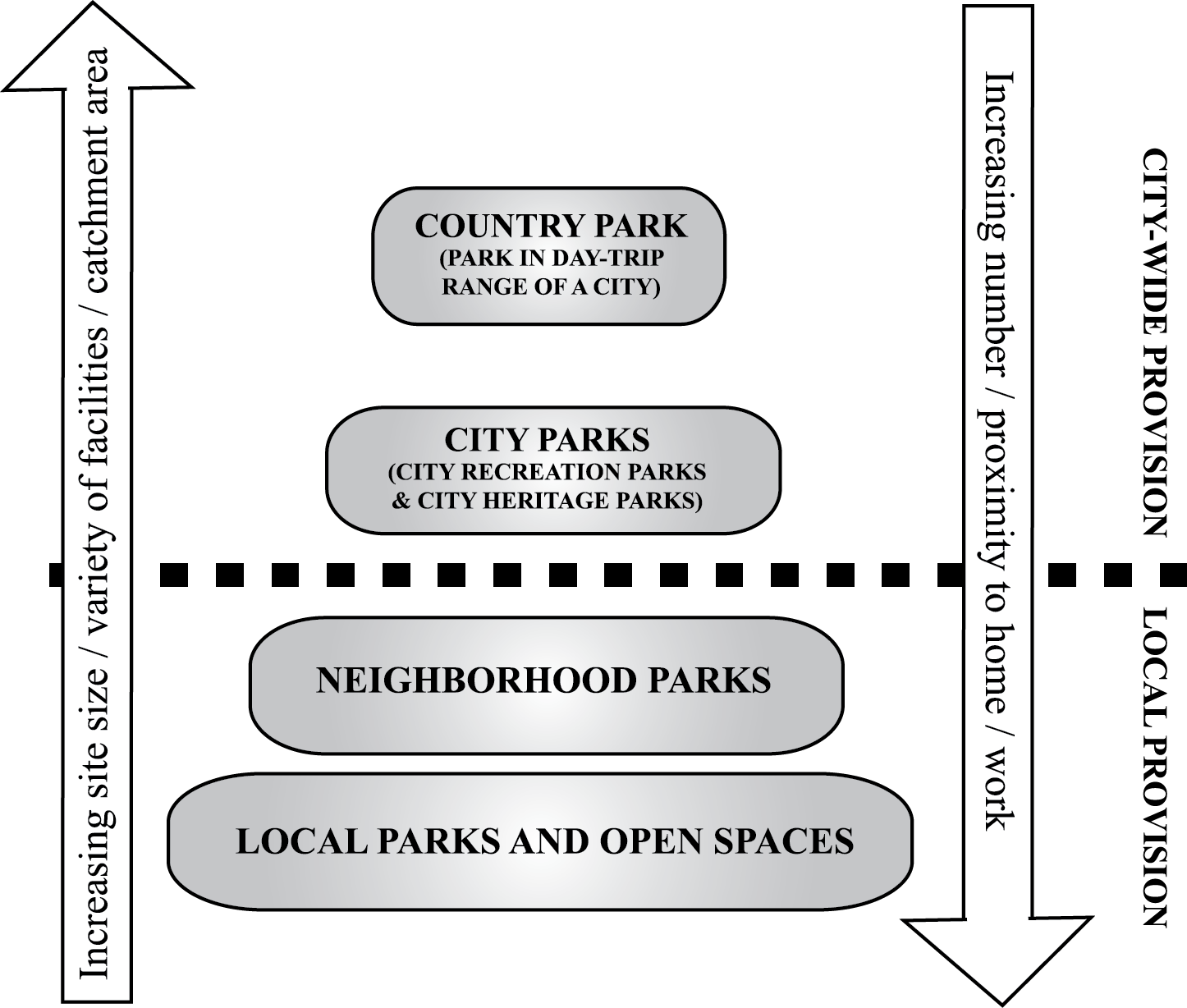| Date | Marks available | 6 | Reference code | .2.bp.9 | |
| Level | SL and HL | Paper | 2 | Time zone | |
| Command term | Explain | Question number | 9 | Adapted from | N/A |
Question
The diagram shows the hierarchy of open spaces serving a city.

[Source: Adapted from Dundee City Council, Leisure and Communities Department http://www.dundeecity.gov.uk/openspace/main.htm]
Referring to the diagram, outline two differences you would expect to find between “local parks and open spaces” and a “country park”.
Explain three reasons why it is important for city planners to ensure that there are sufficient open spaces for urban residents.
With reference to a named urban area, examine the factors that have influenced the location and distribution of leisure facilities, other than open spaces.
Markscheme
Candidates would have to state the differences of the two locations in terms of:
- size
- range of facilities available
- number
- origin of visitors/catchment area size.
2+2 marks for each valid difference outlined.
Candidates are expected to identify three reasons for 2 marks each.
Reasons for open spaces include:
- escape from urban stress
- moderation of urban microclimates
- individual and community health benefits
- development of sports teams and social integration and co-operation
- ecological understanding and sustainability
- preserve natural and urban heritage (museums/religious sites/woodland)
- prevent user conflict in urban areas (skateboarders/football/cycling).
Accept other valid reasons.
Responses are expected to identify the balance between demand for, and supply of, leisure facilities in urban areas and refer to factors that would influence their location. This might include government planning and policy, market influences, changing leisure habits, land use changes and land value changes.
Examples should be specific and illustrate knowledge of the specific conditions in the chosen location rather than general trends. A specific, named example is a requirement of the question and is expected in those achieving band D and above.
Marks should be allocated according to the markbands.

